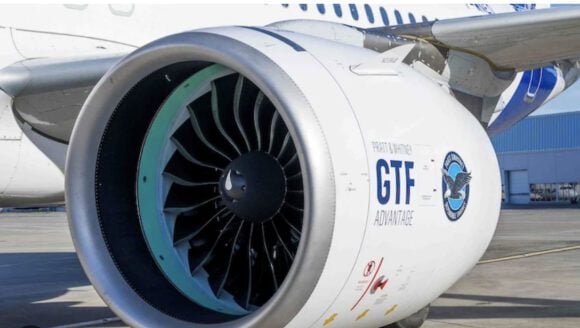When Pratt & Whitney acquired Rolls Royce share of International Aero Engines in October, 2011, the two companies agreed to establish a joint venture to develop new engines for the next generation mid-sized aircraft in the 120-230 seat market, examining the GTF technology from PW and the open rotor technology from Rolls Royce. This week, the parties have mutually ended that joint venture, and each will independently develop engines for that market.
The GTF from Pratt & Whitney is proving to be successful, and certainly quiet at the CSeries first flight. Open rotor technology from Rolls Royce remains interesting but problematic in three regards, the size of the rotors that will require new aircraft designs to mount them, as they will not fit under wing nor attached to a fuselage, the noise levels generated by the unprotected rotors, and the requirement to reduce aircraft speed.
Given the success of the GTF and issues with Open Rotor, it is quite clear that Pratt & Whitney have a useful technology for the near future, and don’t need to cooperate with a potential competitor in the marketplace. With the PurePower1000G engine selected for CSeries, A320neo family, MRJ, MS-21 and EJet2, P&W is well positioned in the narrow-body market. Rolls Royce, which has no viable narrow-body offering today, has focused on wide body applications quite successfully, and needed the joint venture to participate in the narrow-body market much more than Pratt & Whitney.
PW, having acquired IAE, leaves Rolls Royce without a narrow-body offering nor customers. IAE was a joint venture for narrow-body engines, and a natural vehicle for potential cooperation – so what not simply continue that venture than create a new one? That point is now moot.
We believe open rotor concepts remain well on the horizon, and may never be acceptable to the industry due to noise considerations from the un-shrouded blades, and difficulties with size, as illustrated in the diagram below:
It appears that Pratt & Whitney has re-gained a technology leadership position in narrow-body engines, and concluded that the open-rotor concepts being touted by Rolls Royce will be infeasible until at least the next generation of narrow-body aircraft in the 2030 time frame, if then. That provides a 17 year period in which they can refine and optimize their GTF technology, and give CFM a run for their money in the narrow-body marketplace.
Views: 40






This explanation makes more sense the announcement, which said the JV was abandoned for regulatory reasons… Which is odd given that no regulatory reasons impeded IAE, and JVs with other manufacturers in single isle, and in other engine sectors (like Engine Alliance) also are routine. Any insight on what the basis of that announcement was?